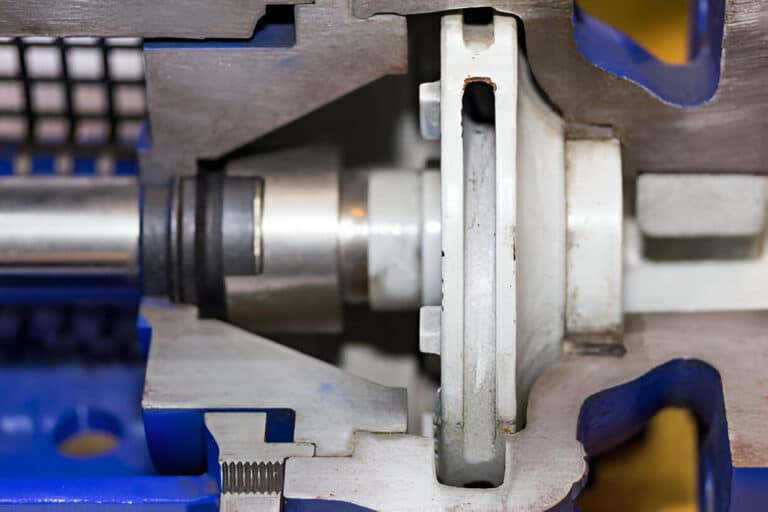Magnetic seals are innovative sealing solutions that leverage magnetic forces to contain fluids, gases, and fine particles. These advanced seals offer unique advantages over traditional mechanical seals in terms of reliability, minimal wear, and reduced friction.
In this comprehensive guide, we will dive into the world of magnetic seals, exploring their types, working principles, key components, advantages, limitations, and diverse industrial applications. By the end, you will have a solid understanding of this cutting-edge sealing technology and its potential to revolutionize machinery across sectors.

What Is a Magnetic Seal
A magnetic seal is a type of seal that uses magnetic forces to create a barrier between two environments, preventing the transfer of fluids, gases, or contaminants. These seals rely on the attraction between magnets and ferromagnetic materials to maintain a tight seal, even in the presence of pressure differentials or motion.
Types of Magnetic Seals
There are several types of magnetic seals, each with unique characteristics and applications:
Magnetic Fluid Seals (Ferrofluidic Seals)
Magnetic fluid seals, also known as ferrofluidic seals, use a ferrofluid as the sealing medium. Ferrofluids are colloidal suspensions of ferromagnetic nanoparticles in a carrier liquid. When exposed to a magnetic field, the ferrofluid forms a dense, liquid O-ring that seals the gap between two surfaces.
Magnetorheological Fluid Seals
Magnetorheological (MR) fluid seals employ a special type of fluid that changes its viscosity when subjected to a magnetic field. MR fluids contain micron-sized ferromagnetic particles suspended in a carrier oil. Upon exposure to a magnetic field, the particles align and form chain-like structures, increasing the fluid’s viscosity and creating a seal.
Magnetic Powder Seals
Magnetic powder seals use fine ferromagnetic powder as the sealing medium. The powder is contained within a cavity surrounding the shaft or component to be sealed. When a magnetic field is applied, the powder compacts and forms a tight seal around the shaft, preventing leakage.
Mechanical Magnetic Seals
Mechanical magnetic seals combine permanent magnets with mechanical components, such as pole shoes and teeth, to create a seal. These seals rely on the attractive forces between the magnets and the ferromagnetic components to maintain a tight seal, even under high pressure or rotational speeds.
Working Principle of Magnetic Seals
The working principle of magnetic seals is based on the interaction between magnets and ferromagnetic materials. When a magnetic field is applied, the ferromagnetic particles or components within the seal are attracted to the magnets, creating a strong bond that prevents the passage of fluids or gases.
In the case of magnetic fluid seals, the ferrofluid is drawn into the gap between the magnets and the shaft, forming a liquid O-ring. The magnetic field keeps the ferrofluid in place, even under pressure differentials or rotational motion.
Components of Magnetic Seals
Magnetic seals consist of several key components that work together to create an effective sealing solution:
Permanent Magnets
Permanent magnets, typically made from rare-earth materials like neodymium or samarium-cobalt, provide the magnetic field necessary for the seal to function.
Pole Shoes and Teeth
Pole shoes and teeth are ferromagnetic components that help to shape and concentrate the magnetic field generated by the permanent magnets. These components are designed to optimize the magnetic flux density in the sealing gap, ensuring a strong and uniform seal.
Sealing Media
The sealing media, such as ferrofluids, MR fluids, or magnetic powders, are the materials responsible for creating the physical barrier that prevents leakage.
Advantages of Magnetic Seals
High Sealing Efficiency
Magnetic seals provide excellent sealing efficiency, preventing leakage and contamination of the sealed fluid or gas. The strong magnetic field generated by the permanent magnets ensures that the sealing media, such as ferrofluids or magnetorheological fluids, remain in place, creating a tight seal.
Low Friction and Wear
Magnetic seals operate with minimal friction and wear, as there is no direct contact between the rotating and stationary parts. This reduces the need for frequent maintenance and replacement, extending the service life of the sealing system.
Wide Range of Operating Conditions
Magnetic seals can function effectively in a wide range of operating conditions, including high and low temperatures, high pressures, and vacuum environments. They are also compatible with various fluids and gases, making them suitable for diverse applications.
Compact and Lightweight Design
Compared to traditional mechanical seals, magnetic seals have a more compact and lightweight design. This allows for easier integration into machinery and equipment, saving space and reducing overall system weight.
Low Power Consumption
Magnetic seals require minimal power to operate, as they rely on the permanent magnets to generate the sealing force. This low power consumption makes them energy-efficient and cost-effective in the long run.
Disadvantages of Magnetic Seals
Limited Pressure Handling Capacity
Magnetic seals have a limited pressure handling capacity compared to some mechanical seals. They are generally suitable for low to medium pressure applications, but may not be the best choice for extremely high pressure environments.
Sensitivity to External Magnetic Fields
The performance of magnetic seals can be affected by external magnetic fields. Strong magnetic fields in the vicinity of the seal may interfere with the sealing mechanism, potentially leading to leakage or reduced sealing efficiency.
Higher Initial Cost
The initial cost of magnetic seals is typically higher than that of traditional mechanical seals due to the specialized materials and manufacturing processes involved. However, the long-term benefits of reduced maintenance and increased reliability often outweigh the initial investment.
Limited Availability and Customization
Magnetic seals are not as widely available as mechanical seals, and finding the right size and configuration for a specific application may be challenging. Custom-designed magnetic seals can be expensive and have longer lead times compared to standard mechanical seals.
Applications of Magnetic Seals
Semiconductor Manufacturing
Magnetic seals are used in semiconductor manufacturing equipment, such as vacuum pumps and wafer handling systems, to maintain high purity levels and prevent contamination of sensitive components.
Aerospace Industry
In the aerospace industry, magnetic seals are employed in various applications, including aircraft engines, hydraulic systems, and satellite components, where reliable sealing is critical in extreme operating conditions.
Medical Devices
Magnetic seals are utilized in medical devices, such as blood pumps and centrifuges, to ensure sterile and leak-free operation, preventing cross-contamination and maintaining the integrity of biological samples.
Chemical Processing
In chemical processing plants, magnetic seals are used in pumps, valves, and other equipment to handle corrosive, toxic, or flammable fluids, providing a safe and reliable sealing solution.
Robotics and Automation
Magnetic seals are incorporated into robotic systems and automated machinery to seal lubricants, coolants, and other fluids, ensuring smooth operation and extending the service life of the components.



